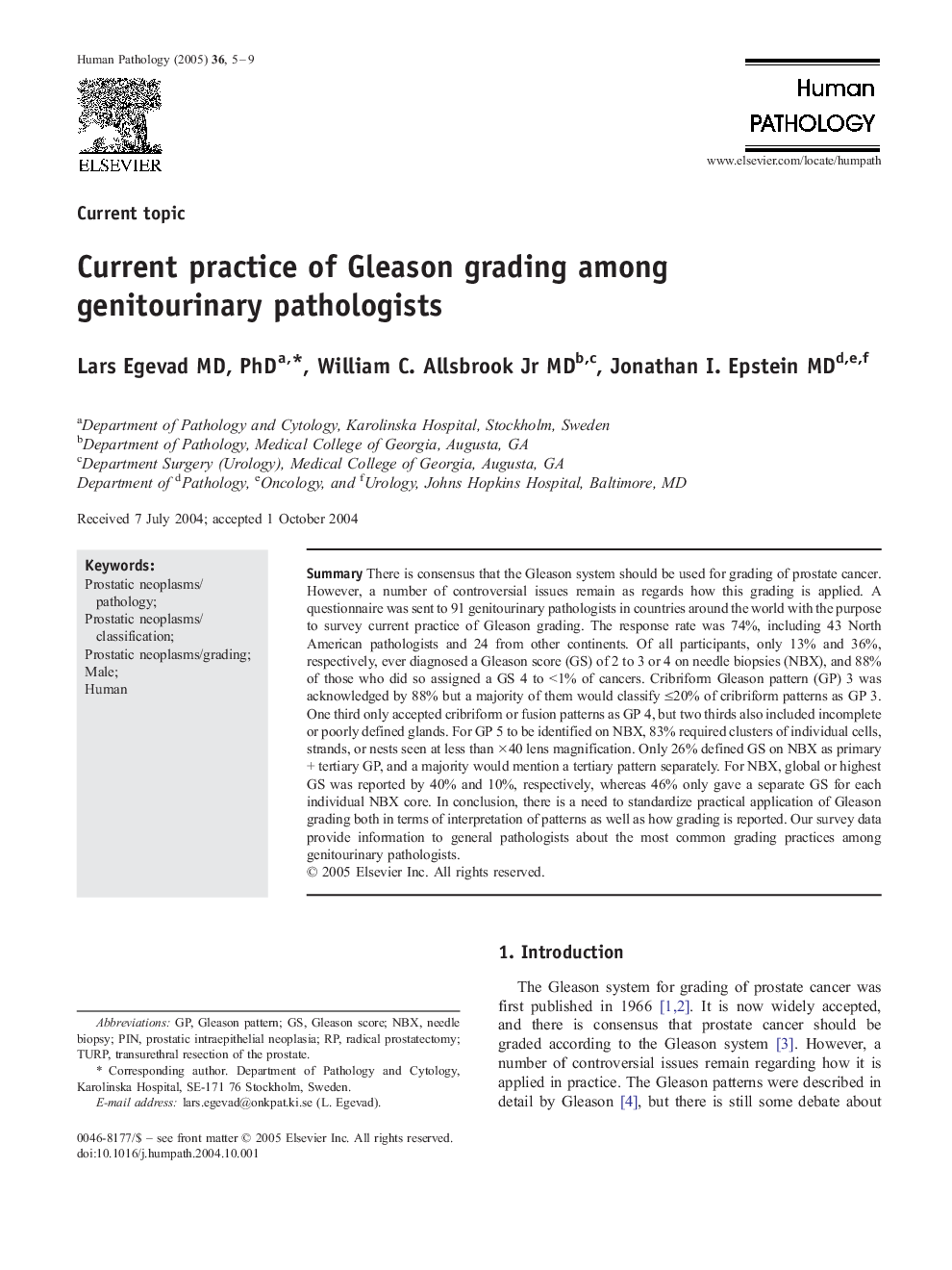| کد مقاله | کد نشریه | سال انتشار | مقاله انگلیسی | نسخه تمام متن |
|---|---|---|---|---|
| 9365625 | 1271518 | 2005 | 5 صفحه PDF | دانلود رایگان |
عنوان انگلیسی مقاله ISI
Current practice of Gleason grading among genitourinary pathologists
دانلود مقاله + سفارش ترجمه
دانلود مقاله ISI انگلیسی
رایگان برای ایرانیان
کلمات کلیدی
Gleason patternprostatic intraepithelial neoplasia - neoplasia intraepithelial پروستاتHuman - انسانTransurethral resection of the prostate - برداشتن ترشحات پروستاتneedle biopsy - بیوپسی سوزنیRadical prostatectomy - رادیکال پروستاتکتومیTURP - شرمProstatic neoplasms/pathology - نئوپلاسم پروستات / پاتولوژیMale - نرGleason score - نمره گلیسونPIN - پین
موضوعات مرتبط
علوم پزشکی و سلامت
پزشکی و دندانپزشکی
آسیبشناسی و فناوری پزشکی
پیش نمایش صفحه اول مقاله

چکیده انگلیسی
There is consensus that the Gleason system should be used for grading of prostate cancer. However, a number of controversial issues remain as regards how this grading is applied. A questionnaire was sent to 91 genitourinary pathologists in countries around the world with the purpose to survey current practice of Gleason grading. The response rate was 74%, including 43 North American pathologists and 24 from other continents. Of all participants, only 13% and 36%, respectively, ever diagnosed a Gleason score (GS) of 2 to 3 or 4 on needle biopsies (NBX), and 88% of those who did so assigned a GS 4 to <1% of cancers. Cribriform Gleason pattern (GP) 3 was acknowledged by 88% but a majority of them would classify â¤20% of cribriform patterns as GP 3. One third only accepted cribriform or fusion patterns as GP 4, but two thirds also included incomplete or poorly defined glands. For GP 5 to be identified on NBX, 83% required clusters of individual cells, strands, or nests seen at less than Ã40 lens magnification. Only 26% defined GS on NBX as primary + tertiary GP, and a majority would mention a tertiary pattern separately. For NBX, global or highest GS was reported by 40% and 10%, respectively, whereas 46% only gave a separate GS for each individual NBX core. In conclusion, there is a need to standardize practical application of Gleason grading both in terms of interpretation of patterns as well as how grading is reported. Our survey data provide information to general pathologists about the most common grading practices among genitourinary pathologists.
ناشر
Database: Elsevier - ScienceDirect (ساینس دایرکت)
Journal: Human Pathology - Volume 36, Issue 1, January 2005, Pages 5-9
Journal: Human Pathology - Volume 36, Issue 1, January 2005, Pages 5-9
نویسندگان
Lars MD, PhD, William C. MD, Jonathan I. MD,